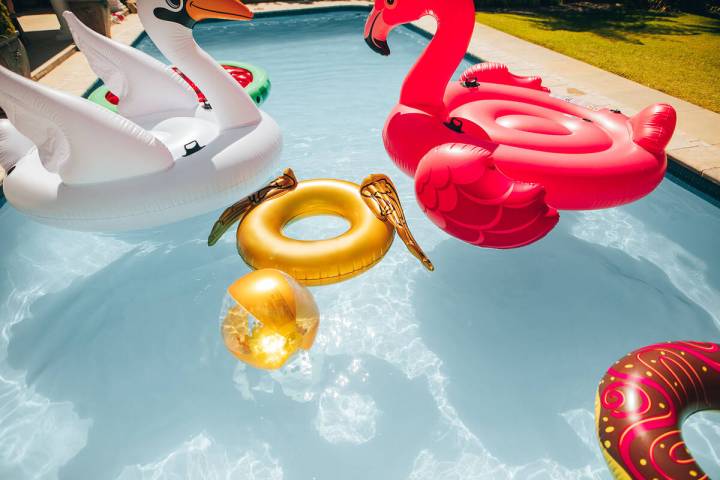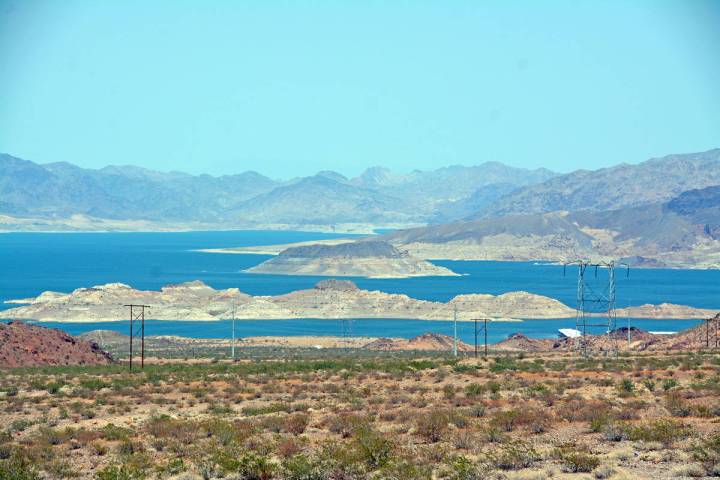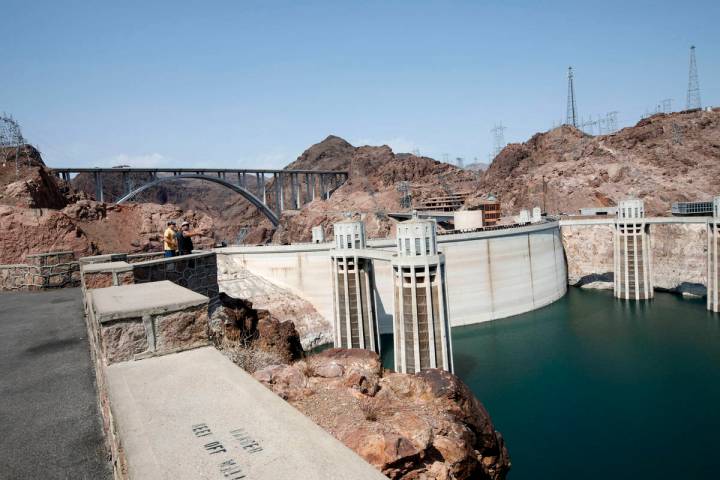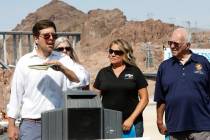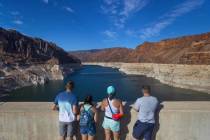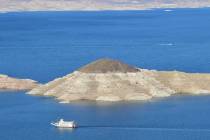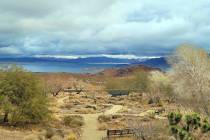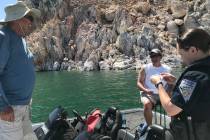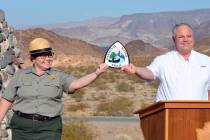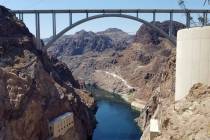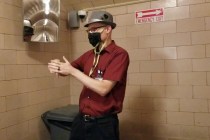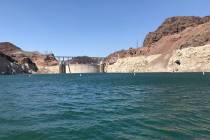Deeper cuts to Nevada’s allocation of Colorado River water could be coming in the next few years, according to water level projections released recently.
Lake Mead/Hoover Dam
As transportation officials mull the future of the important Interstate 11 build-out, one option is now off the table.
As the Labor Day weekend approaches, Lake Mead National Recreation Area is encouraging visitors to leave their pool toys at home. In the interested of public safety, the use of inflatable and noninflatable items intended for use in swimming pools have been prohibited.
Boulder City is not expected to lose any of its water despite the first federally declared shortage for Lake Mead.
Officials in Lower Colorado River Basin states want to slow the decline of Lake Mead’s water levels over the next few years by paying Southern California farmers not to plant crops.
The Bureau of Reclamation has a new full-time regional director for its Lower Colorado River Basin. Jaci Gould, who has been with the bureau since 1992, said she was “honored” to be selected to this position.
A group that included environmentalists, elected leaders and officials from business and agriculture gathered July 15 to put forth a slate of demands for a new approach to managing the Colorado River.
Lake Mead’s water level this week is projected to match its lowest point since the reservoir was formed in the 1930s, federal officials said Tuesday, June 7.
Visitors to Lake Mead National Recreation Area are being advised that lower water levels expected during the next several years will impact water access points and boat launch areas.
More than 8 million people visited Lake Mead National Recreation Area last year, moving it to the fifth most visited National Park Service site in the country.
There’s a great, big world out there just waiting for you to explore it. Data suggests you may already have.
Boulder City locals and visitors have another reason to visit Lake Mead National Recreation Area, a newly designated water trail providing more access to the Nevada and Arizona shorelines of Lake Mohave and the Colorado River.
An increased risk of potential water shortages in the Colorado River Basin is expected for the next five years, according to projections released earlier this week by the Bureau of Reclamation.
Several government agencies recently solidified their commitment to provide reliable hydropower to support the electrical systems in the nation.
Colorado River water operations will remain the same for Southern Nevadans next year despite Lake Mead being below the level needed to stay out of the drought contingency plan.



